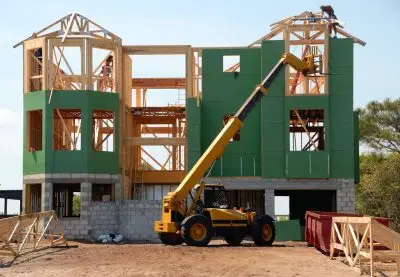Fix WordPress White Screen of Death (WSOD)

Key Points at a Glance
- Debug Mode Activation: WordPress offers a built-in debug mode accessed by modifying the "wp-config.php" file, aiding in issue troubleshooting.
- Error Identification: Upon enabling debug mode, error messages or warnings replace the white screen, pinpointing the underlying cause, such as plugin conflicts or PHP errors.
- Plugin Conflict Resolution: Troubleshooting involves deactivating plugins by renaming the "plugins" folder, gradually reactivating them to identify the problematic one, and seeking support or alternatives if needed.
- Theme Evaluation: Switching to a default WordPress theme helps determine if the issue lies with the current theme, prompting contacting the theme developer or exploring alternative themes.
- Server Configuration Check: Verifying file permissions and server configuration ensures they meet WordPress requirements, with recommended permissions for folders being 755 and for files being 644.
Table of Contents
Whenever you get a white screen of death on your WordPress website, it usually means there's a conflict. Let’s look at some useful steps to identify the problem, and perhaps resolve the issue too.
Step 1: Enable Debugging
WordPress has a built-in debug mode, which will help us troubleshoot the issue.
Access your WordPress installation files via FTP or file manager in your hosting control panel.
Locate the "wp-config.php" file in the root directory.
Open the "wp-config.php" file for editing.
Look for the line that says define('WP_DEBUG', false); and change it to define('WP_DEBUG', true);.
Save the changes and upload the modified "wp-config.php" file back to your server.
Step 2: Identify the Issue
Refresh your WordPress website. Instead of a white screen, you should now see error messages or warnings that indicate the cause of the issue.
Note down the specific error message or warning you see. Common issues include plugin conflicts, theme problems, or PHP errors.
If the error message references a specific plugin or theme, try deactivating that plugin or switching to a default WordPress theme to see if the issue is resolved.
If this didn't resolve the issue, proceed to the next step.

Step 3: Check for Plugin Conflicts
Although WordPress plugins and add-ons are a powerful way to add functionality to the CMS, it sometimes may cause issues due to compatibility or other conflicts.
Rename the "plugins" folder in your WordPress installation directory to something like "plugins_disabled". This will deactivate all the plugins at once.
Refresh your WordPress website. If the website loads properly, the issue is likely caused by a plugin.
Rename the "plugins_disabled" folder back to "plugins".
Go to the "plugins" folder and rename each plugin's folder one by one. After renaming each folder, refresh your website to identify the problematic plugin.
Once you've identified the problematic plugin, you can either reach out to the plugin developer for support or consider finding an alternative plugin that serves a similar purpose.
Troubleshooting is just a part of a Web Developers Life.
Unknown
Step 4: Check Theme-related Issues
Switch to a default WordPress theme (e.g., Twenty Twenty-One) by going to "Appearance" > "Themes" in your WordPress dashboard.
Refresh your website. If the website loads properly, the issue may be with your previous theme.
Contact the theme developer for assistance or consider using a different theme if the issue persists.
Step 5: Verify File Permissions and Server Configuration
Ensure that file and folder permissions are correctly set on your server. The recommended permissions are typically 755 for folders and 644 for files.
Contact your hosting provider to ensure that your server configuration meets the requirements for running WordPress.
Step 6: Seek Professional Help
If you have followed the above steps and are still unable to resolve the issue, it may be beneficial to seek assistance from a professional WordPress developer or your hosting provider's support team. They can offer more advanced troubleshooting and assistance in fixing the White Screen of Death.
Note: Remember to keep backups of your WordPress files and database before making any changes to ensure you can restore your website in case of any complications.
Thank you for reading! to our monthly newsletter to stay updated on the latest WordPress news and useful tips.

Stuck with development or facing an issue?
WPLake offers affordable on-demand website development and design.
No matter the size of your project - contact us now, and we'll get it done for you!
Frequently Asked Questions Test Your Knowledge
FAQ mode
/
Learning mode
- What causes the WordPress white screen of death?
The white screen typically results from conflicts within WordPress, such as plugin or theme compatibility issues, PHP errors, or server configuration problems.
- What should I do if I encounter the white screen of death?
Start by enabling debug mode to reveal error messages, then troubleshoot by identifying and resolving plugin conflicts, checking theme compatibility, and verifying server configurations.
- How do I enable debugging in WordPress?
Debugging in WordPress involves accessing the "wp-config.php" file and changing the line define('WP_DEBUG', false); to define('WP_DEBUG', true);.
- How can I identify plugin conflicts?
To identify plugin conflicts, deactivate all plugins at once by renaming the "plugins" folder, then reactivate them one by one to pinpoint the problematic plugin.
- What file permissions and server configurations are recommended for WordPress?
The recommended file permissions for WordPress are typically 755 for folders and 644 for files, and it's essential to ensure that server configurations meet WordPress requirements.


